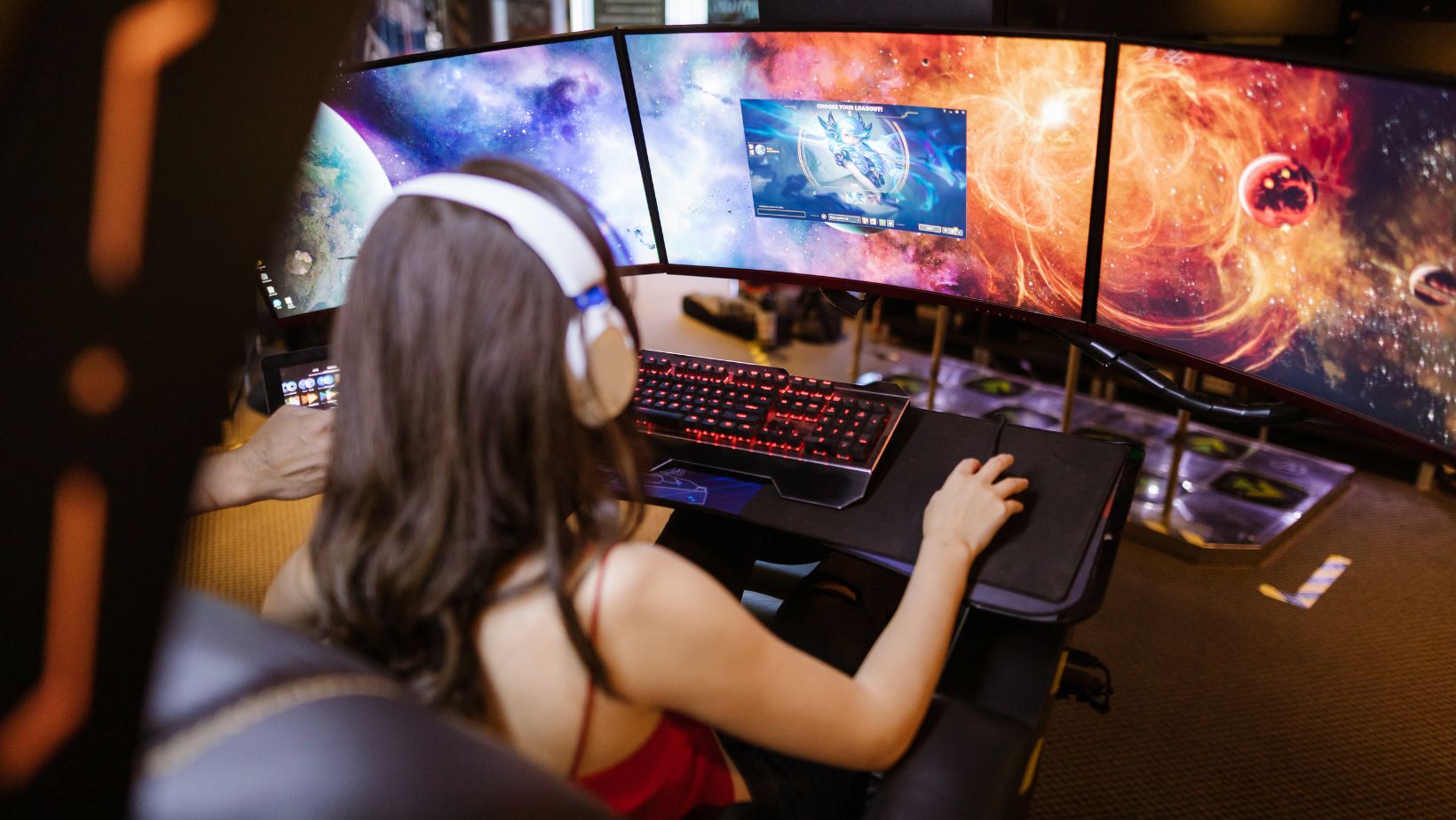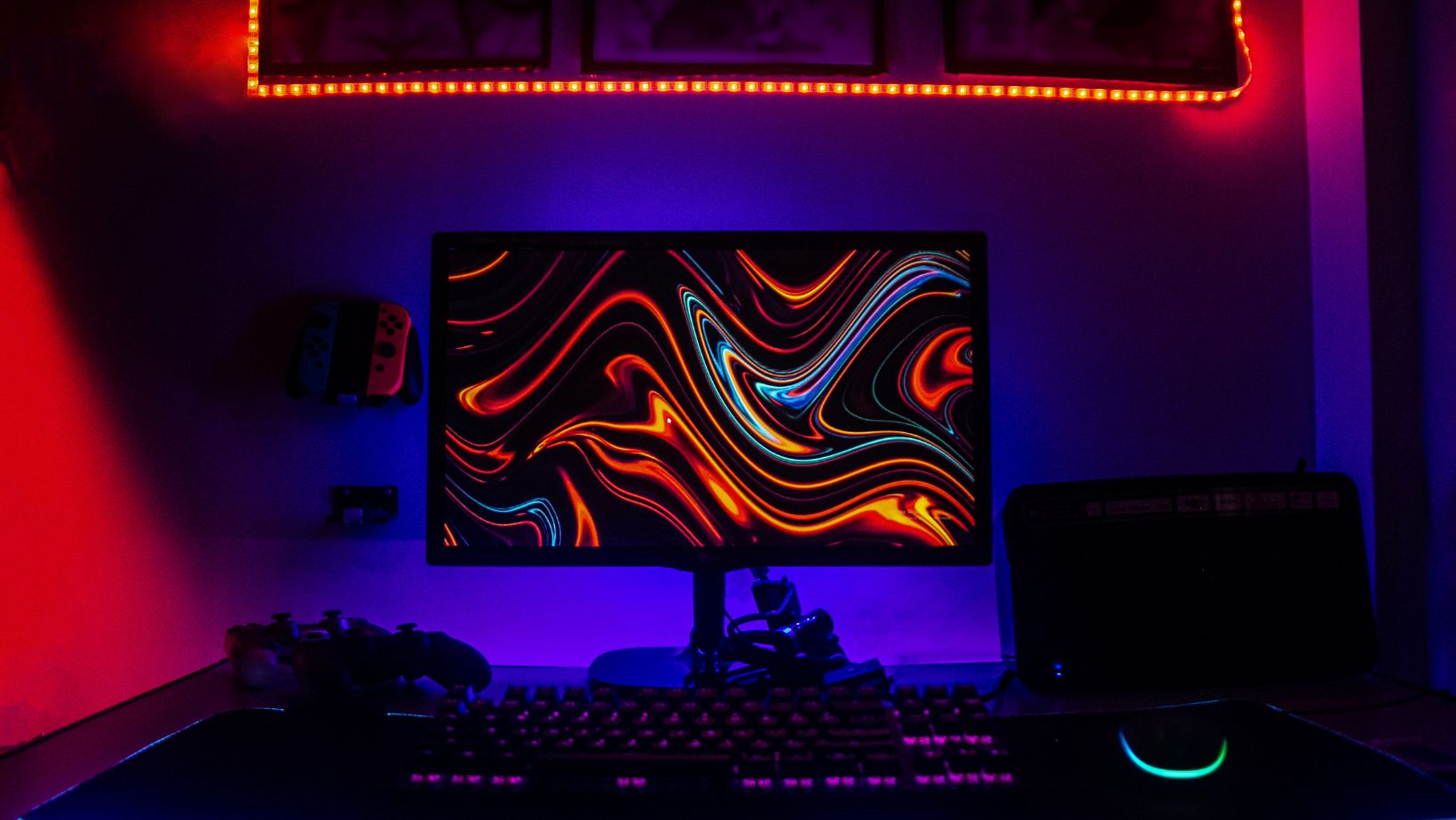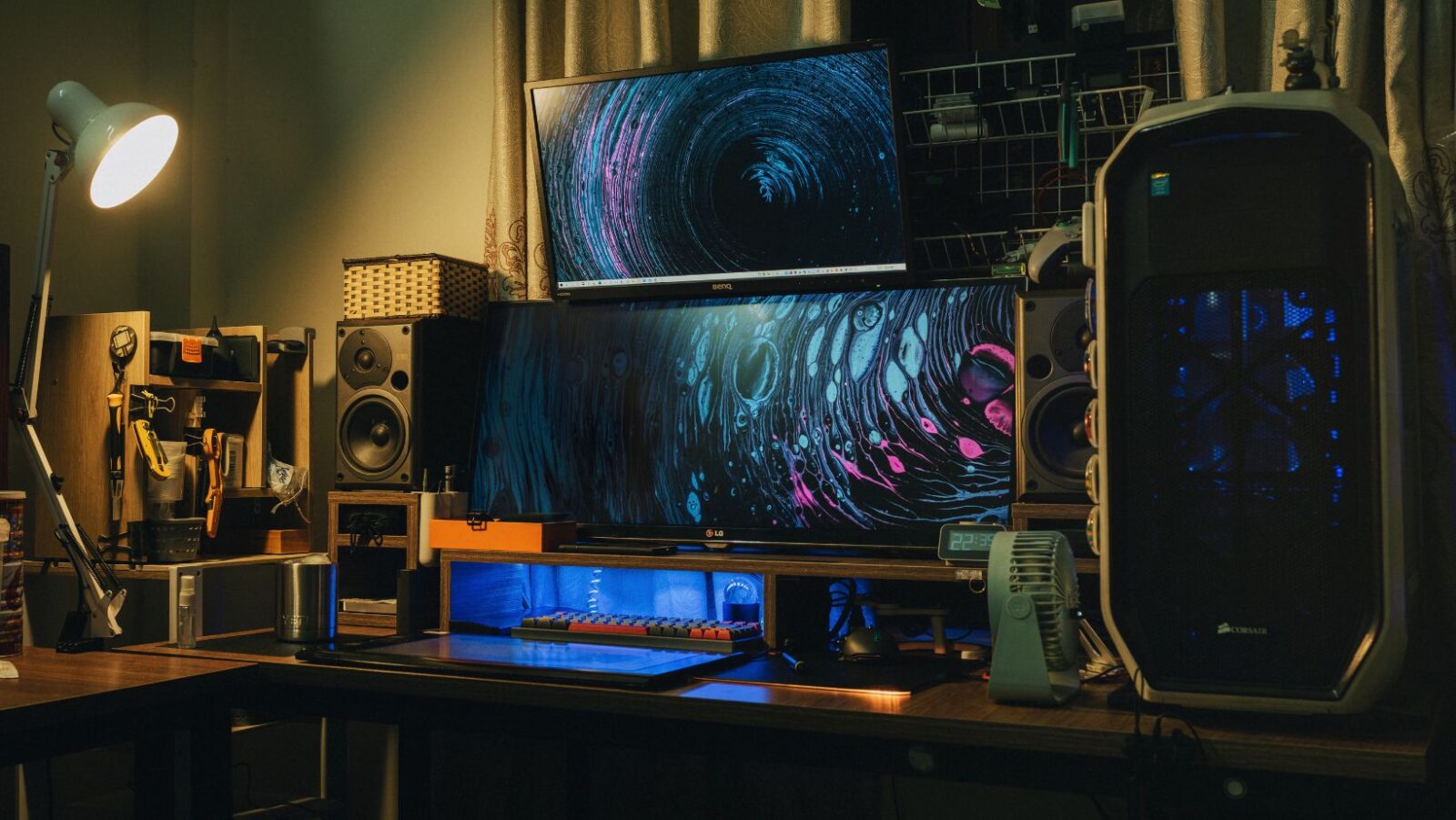Andrew is a lover of all things tech. He enjoys…
You’ve upgraded to a fancy gaming monitor expecting buttery-smooth, razor-sharp visuals. But if you’re still experiencing hiccups or “lag,” the culprit might not be your screen at all. A great gaming monitor is essential for peak performance, yet it’s only half the battle. The other half? Ensuring your network delivers data as fast and consistently as your monitor displays it. Below, we’ll explore why network stability matters just as much as display specs and then dive into the latest monitor tech that gamers are excited about.
Table of Contents
ToggleDon’t Let Network Lag Undermine Your Setup
Technically, lag refers to network latency, but many players use it to describe any slow or choppy experience. It’s easy to blame your new monitor when a game stutters or your hits don’t register. In reality, visual inconsistencies like rubberbanding or delayed hit registration can stem from network instability (high ping or jitter), not your display.
This is why competitive gamers are turning to network tools such as proxy servers to firm up their connections. A static residential proxy routes your game traffic through a dedicated IP address (typically an IP from an ISP, not a data center) that remains constant. By smoothing out the data flow and prioritizing game packets, a proxy can minimize lag and jitter in online games. In essence, the proxy acts like an optimized middleman, finding a stable route to the game server and reducing the chances of sudden ping spikes or packet loss. The “residential” part means the IP appears as a normal home user, which can sometimes avoid congestion or throttling on game networks.

Crucially, static proxies maintain a consistent connection rather than constantly switching IP addresses. Rotating proxies, which cycle through different IPs periodically, are great for web scraping or anonymity, but they’re bad news for gaming – you don’t want your IP changing mid-match. With a static setup, the constant connection yields higher speed and improved stability over rotating proxies. It also prevents the potential chaos of an IP swap kicking you from a session or messing with server trust. In short, a static residential proxy gives you a single, solid pipeline to the game servers, helping eliminate the network as a source of stutter. Gamers who have invested in high-end PCs and monitors use these proxies to ensure network lag isn’t the weak link undermining their performance (and as a bonus, you won’t need to scream at your monitor when the issue was your ping all along!).
Innovations in OLED and 5K Monitors
Let’s switch gears and talk about the monitor itself. Gaming displays have come a long way in just a few years. Two big buzzwords these days are OLED panels and super-high resolutions (like “5K”). Recent flagship monitors, for example, the LG UltraGear 45GR95QE-B and the Corsair Xeneon Flex 45WQHD240, have dramatically changed what gamers expect from a screen.
What’s so special about these? For one, they marry the motion performance of top-tier esports monitors with the image quality of high-end TVs. The LG 45GR95QE-B is a 45-inch ultrawide with a blazing 240 Hz refresh rate and an OLED panel. Evaluators have called it “a fantastic gaming monitor with both a fast 240Hz refresh rate and incredible picture quality thanks to its OLED panel.” In practical terms, this means you get silky-smooth frame rates plus the deep blacks and rich colors that OLEDs are known for. Dark scenes in horror games become truly inky black (OLEDs have near-infinite contrast since pixels can shut off completely), and fast motion looks crisp because OLED pixels transition almost instantly, eliminating the motion blur you’d see on an LCD. The jump to OLED has essentially spoiled gamers. Once you experience a game with perfect blacks and no ghosting, it’s hard to go back.
Then there’s the Corsair Xeneon Flex, which takes innovation even further by introducing a bendable OLED panel. This 45-inch ultrawide can literally be used flat or bent into an 800R curvature on demand. It uses the same gorgeous LG OLED screen tech, so you’re not trading image quality for the gimmick – in fact, it delivers “blistering speeds, impeccable image quality, and elite motion clarity” for an “immersive gaming experience like no other,” as one of the online publications mentions.

The Flex’s ability to go from flat to curved is more than a party trick; it means you can have a flat screen for competitive play or productivity and a deeply curved, wraparound view for maximum immersion in single-player adventures. It’s the kind of flexibility gamers didn’t even know they wanted until now.
The Rise of G-Sync Compatible Displays
Historically, NVIDIA’s approach was to use a proprietary G-Sync hardware module built into certain monitors. These modules did the job of matching the monitor’s refresh to the game’s frame rate, delivering smooth, tear-free visuals. However, that solution came at a premium. The custom G-Sync board actually replaced the monitor’s traditional scaler, and while it enabled excellent VRR (variable refresh rate) performance, it also limited screen capabilities (like fewer inputs or features) and drove up costs. In other words, G-Sync monitors were often more expensive and sometimes lacked things like widespread connectivity or fancy OSD options.
For gamers, the rise of G-Sync Compatible and Adaptive-Sync displays is a big win. It has made technologies like variable refresh and low framerate compensation (which keeps gameplay smooth even when FPS drops) widely available, not just a luxury feature. You no longer have to specifically hunt down an “NVIDIA G-Sync” monitor and pay a premium for guaranteed smoothness; many FreeSync displays will work out-of-the-box with your GeForce card. The Alienware AW3423DWF we mentioned is proof that you can get a cutting-edge QD-OLED panel with tear-free gaming on both NVIDIA and AMD GPUs and save money in the process.
The bottom line: adaptive sync has matured to the point where proprietary solutions are fading. Gamers can enjoy flawless, tear-free visuals on a wide range of monitors now, which means more freedom to choose the display that fits your budget and needs without sacrificing performance.
Andrew is a lover of all things tech. He enjoys spending his time tinkering with gadgets and computers, and he can often be found discussing the latest advancements in technology with his friends. In addition to his love of all things tech, Andrew is also an avid Chess player, and he likes to blog about his thoughts on various subjects. He is a witty writer, and his blog posts are always enjoyable to read.






